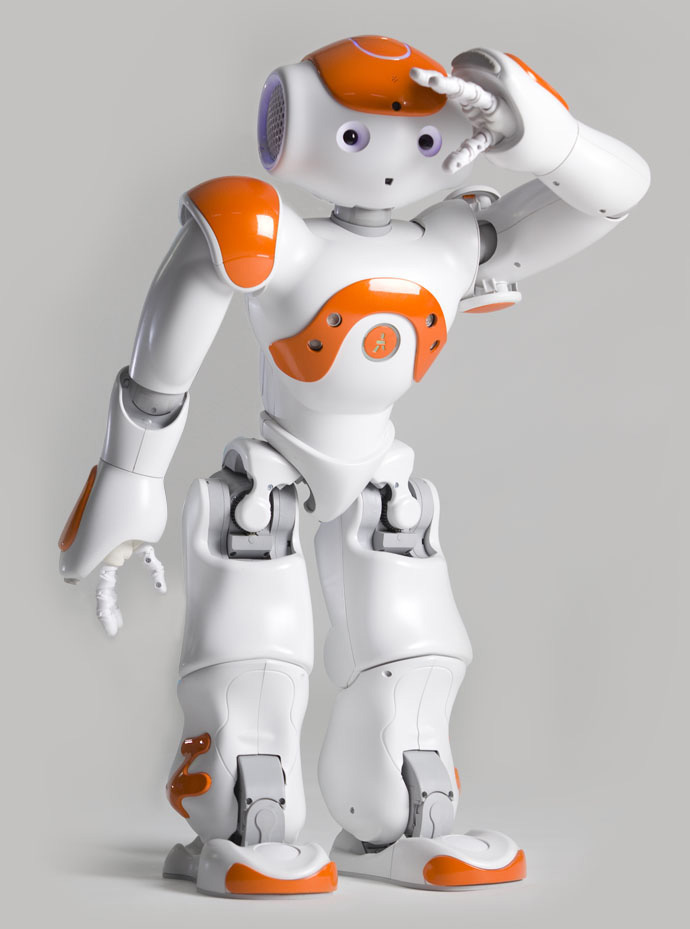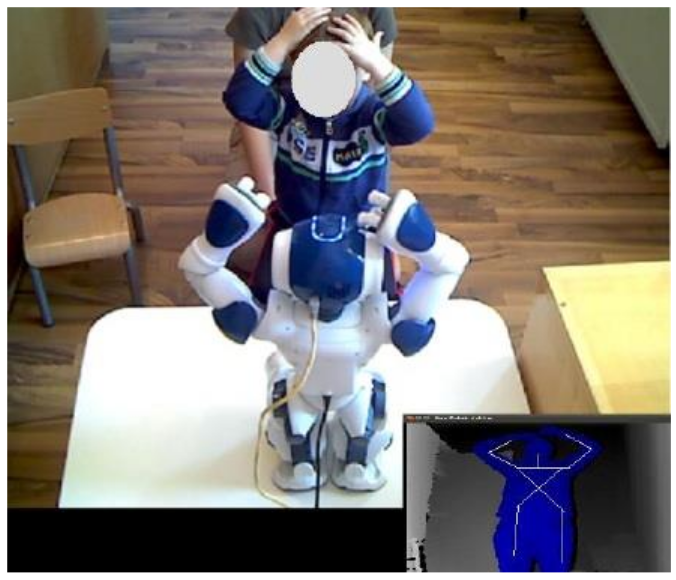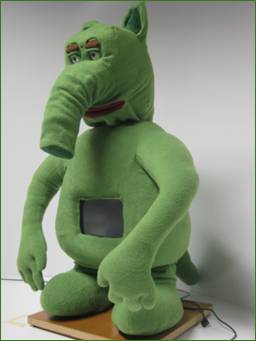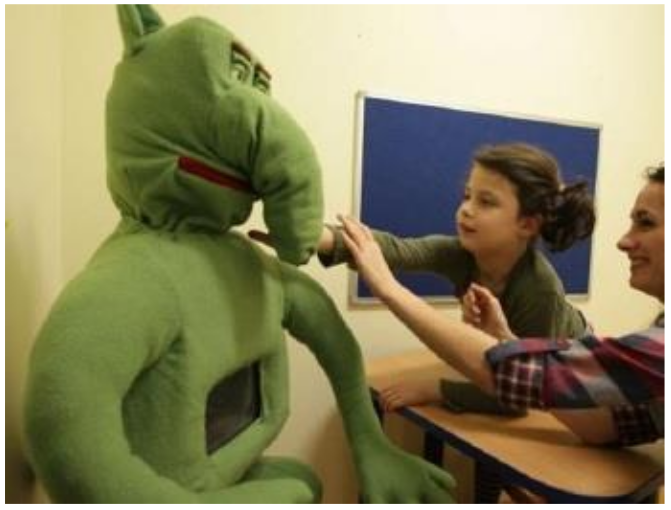Robots we are using


The main DREAM experimental platform is the 58-cm tall, 5-kg humanoid robot NAO developed by Aldebaran Robotics. NAO is a 25 degrees of freedom robot, equipped with a rich array of sensors: 2 cameras, 4 microphones, sonar rangefinder, 2 IR emitters and receivers, 1 inertial board, 9 tactile sensors, and 8 pressure sensors. NAO can detect and recognize pre-learned objects and faces, recognize words and sentences, and localise sounds in space. It has various communication devices including LED lights, two loud-speakers, a voice synthesizer with language-specific intonation and pronunciation. An exploratory study investigated ASD children’s awareness of being imitated by a robot in a play/game scenario (see the figure on the right). The NAO robot imitated all the arm movement behaviours of the child in real-time in dyadic and triadic interactions. Preliminary results with four children from a pilot study suggested that more movement initiations are performed in the presence of NAO robot than in the presence of a human therapist. A Kinect sensor detected the child’s motions. These experiments were a joint collaboration between Babeş Bolyai University and Ensta Paris.
NAO has also been deployed for ASD, and beta-tests of autonomous behaviours on NAO have been already initiated in specialized education schools by Aldebaran Robotics. The NAO platform has been used successfully as a common platform for child-robot interaction, with the specific aim of providing distraction and education in hospital settings. Because of its size and appearance, NAO is particularly well received by young children. They anthropomorphize NAO and readily engage in affective social interactions.
ASK NAO (Autism Solution for Kids) was created by Aldebaran Robotics to customize NAO to support teachers with in-class tasks and help children with autism. ASK NAO clears the path for a revolution in thinking, driven by those who are most involved with autism and technology. To accomplish this, Aldebaran Robotics is creating a multi-sided community made up of developers, therapists, researchers, teachers, parents, enthusiasts, and the Aldebaran team collaborating on the ASK NAO solution to help children overcome their limitations.


The second DREAM experimental platform is Probo (see Probo's website), developed at Vrije Universiteit Brussel. This robot was designed to focus on verbal and non-verbal communication. The robot is designed to act as a social interface by employing human-like social cues and communication modalities. It is well suited for this task since it has a fully expressive and anthropomorphic head. With 20 motors in the head, the robot is able to express attention and emotions via its gaze and facial expressions. Currently, a non-autonomous control system is used. To guarantee a safe physical interaction between the robot and the children, compliant actuation systems and a layered structure with foam and fabric are implemented. These elements contribute to the aspects of safe, soft and “huggable” interaction. During the interactions, children are very willing to touch the robot physically (see the figure on the left). A new version with actuated arms, hands, and body and able to gesture, adapt body posture and perform basic manipulation skills is currently under construction.
Probo has already been used with ASD children in a joint collaboration between Babeş Bolyai University and Vrije Universiteit Brussel. Several studies with Probo have been performed: to test whether typically developed children are able to recognize the emotions of the robot; as a social story telling agent for improving social skills in ASD children; to support children to recognize basic emotions; and to mediate social play skills of children with ASD with their sibling. The outcomes of these studies all showed positive results. In all the studies, the robot was used in a Wizard of Oz setup.